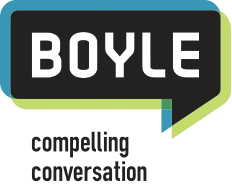Five Key Factors in Placing an Op-Ed

“We like the piece. It will go up on our site tomorrow morning and I’ll send you a link.”
For a PR person, there’s no better way to start the day than to receive that kind of short reply from someone whom you’ve pitched an op-ed piece on behalf of one of your clients.
The chances of getting such a reply, of course, are not great. But there are several ways of improving your odds, what I call the five key factors in placing an op-ed in a targeted publication. They are:
1. A Strong News Hook
The opinion pages of a daily newspaper or a weekly trade publication are not filled in a vacuum. The editors of those pages are news junkies themselves, and they are very keen to provide either their own take on the news – in the form of their own editorials – or other smart takes on the news, in the form of material provided to them on a timely basis. But it’s not just about them. These editorial page editors assume that their readers are following the news closely, and they genuinely want to serve the needs and meet the expectations of those readers. A strong news hook is an essential first element in a successful op-ed placement.
2. A Well-Reasoned Argument
While diatribes are commonplace on social media, they generally don’t work as a “style” for making your case in an op-ed. It is important to take a strong point of view on the topic at hand, but it is equally important to back up that point of view with facts and a well-reasoned argument. “Just because” isn’t good enough, nor should it be. The great part about this second point is that the better the argument, the more chance the piece has of getting printed, but also the better the argument the more chance the piece has of being a great evergreen piece of content on your web site in the unfortunate event that it isn’t published externally.
3. A Great Subject Line and Lead
Like of all of us, editorial page editors are busy people and they must often make split-second decisions on whether to devote time to a piece of content as opposed to the 15 other items that might be on their platter. The good thing is that these editors are “in-box people,” meaning that they do rely on what is in these in boxes to do business throughout a typical day. Reporters, on the other hand, are often chasing things down, doing more “enterprise” work during the course of their workdays. So how can one’s work stand out in an editorial page editor’s in box? Have a subject line that draws attention and a headline on the piece itself that hammers home the news hook and frames the planned argument.
4. Nothing Perceived as Self-Serving
So far, the points I’ve made about what makes a successful op-ed submission have all been “must-do’s,” affirmative actions that greatly increase the chances of publication. This point is about “what not to do.” Do not submit a proposed op-ed that has any chance of being perceived as self-serving. Yes, I know that sometimes this can be tough, as we all want to believe our product, service or industry is so important that a reasonable editorial page editor would want his or her readers to know all about it. But even if a piece has a strong subject line, a well-reasoned argument, and a great subject line or lead, it is unlikely to be chosen for publication if it’s perceived to be too promotional.
5. Guideline Awareness
What do I mean by this? Nearly every publication has submission guidelines that are intended to be followed, and certainly not ignored. Word count is, in most cases, part of those guidelines. I am calling them “guidelines” (not “rules”) for a reason, as that is the manner in which they are usually positioned to a potential contributor. So yes, an extremely strong 1,500-word essay may get published in a target publication that recommends a 750-word limit, if it is so incredible that the outlet decides to let the piece, in effect, take “two spots” in its print edition. But a 750-word piece, which just so happens is the length of this particular blog post, has a much better chance of getting published!
